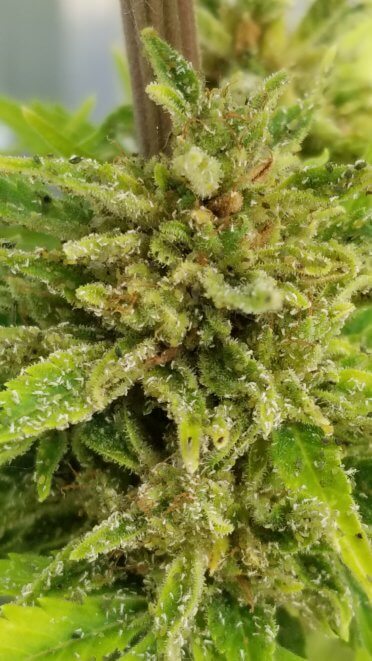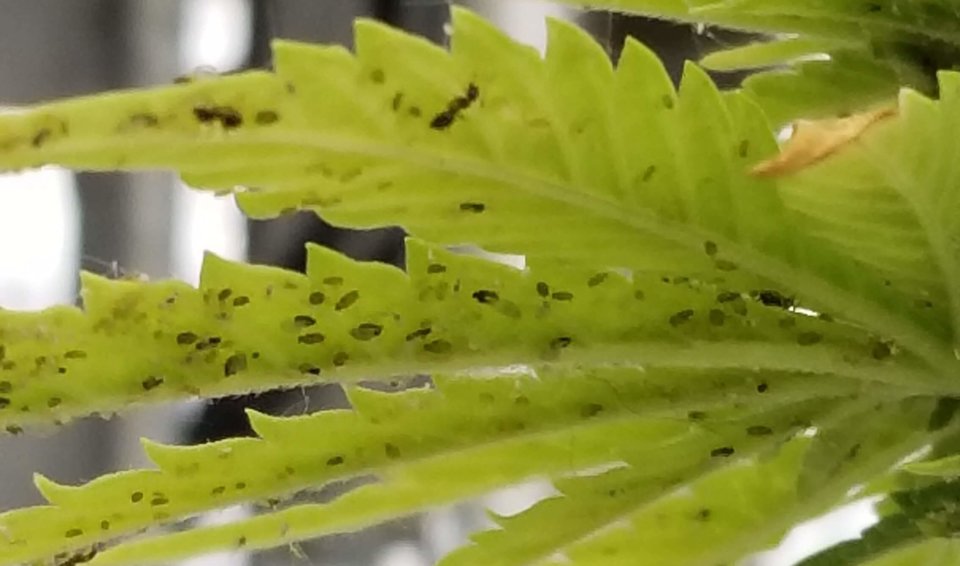 Today we meet the aphids! Aphids are tiny (and I mean really tiny, sometimes only a little larger than a grain of sand) insects that feed on the sap of plants. Despite the fact that they are problematic to farmers everywhere, aphids are very unique insects. There are more than 5,000 species in the aphidoidea family, with colors ranging from orange to green to brown and skin that can be fluffy, wooly or smooth. Additionally, not all aphids are considered pests and enjoy unique relationships with other animals. Certain ants raise aphids as “cattle,” as they produce a sweet liquid called honeydew for the ants (something you can actually see happening on some of our plants in the greenhouse). Aphids are also one of the few insects to give live birth, meaning they don’t necessarily lay eggs when reproducing.
Today we meet the aphids! Aphids are tiny (and I mean really tiny, sometimes only a little larger than a grain of sand) insects that feed on the sap of plants. Despite the fact that they are problematic to farmers everywhere, aphids are very unique insects. There are more than 5,000 species in the aphidoidea family, with colors ranging from orange to green to brown and skin that can be fluffy, wooly or smooth. Additionally, not all aphids are considered pests and enjoy unique relationships with other animals. Certain ants raise aphids as “cattle,” as they produce a sweet liquid called honeydew for the ants (something you can actually see happening on some of our plants in the greenhouse). Aphids are also one of the few insects to give live birth, meaning they don’t necessarily lay eggs when reproducing.
You may wonder how such a tiny insect can cause so much damage to a plant; it’s because they reproduce extremely quickly and can form massive populations. On top of this, some aphids can develop wings, which allow them to spread to other plants in a crop group. Aphids have recently invaded our greenhouse and have become so problematic that we had to remove all our marigolds because they were too damaged by the aphids to sustain.
Beating back aphids in a greenhouse is challenging because a lot of conventional methods used to control aphids don’t work in a hydroponic or greenhouse setting. Many tactics involve spraying mixtures of soaps, oils or alcohols. The trouble there is that anything we spray in the greenhouse will leak into the aquaponic environment, which poses risks to both our plants and our fish in the aquaponics. That isn’t to say that we should abandon that strategy, however. Certain natural products, such as essential oils made from herbs, have the ability to repel aphids while still being biologically safe. We can possibly find a material that is both harmless to the fish and harmful to the aphids.
Aphids can also be repelled by the use of natural deterrents or natural predators. Aphids dislike plants like catnip, garlic, chives and various alliums while being extremely attracted to plants like asters, mustard, nasturtium and dahlias. Having plants like these can act as aphid deterrents or “aphid traps.” The most interesting method people have used is the employment of natural aphid predators to keep their numbers in check. Ladybird beetles (otherwise known as ladybugs) can often be bought online or at nurseries and introduced to a garden to begin feeding on aphids. The same can be said for green lacewings, whose larvae can munch on aphids like there’s no tomorrow.
Keep in mind that all of these are merely ideas for the time being. We’re going to do a lot of trial, error and experimentation over the summer to find out what things work best for us. On that note, we’ve set up sticky traps inside of our greenhouse that we’ll monitor over the next week to discover exactly what kind of aphids and other pests we’re dealing with. Hopefully by identifying our foes, we can better prepare for how to fight back.
Stay tuned for more information about what’s going on in the GROW greenhouse. Let us know what questions you have about pest control or aquaponics. We hope to see you around soon!






